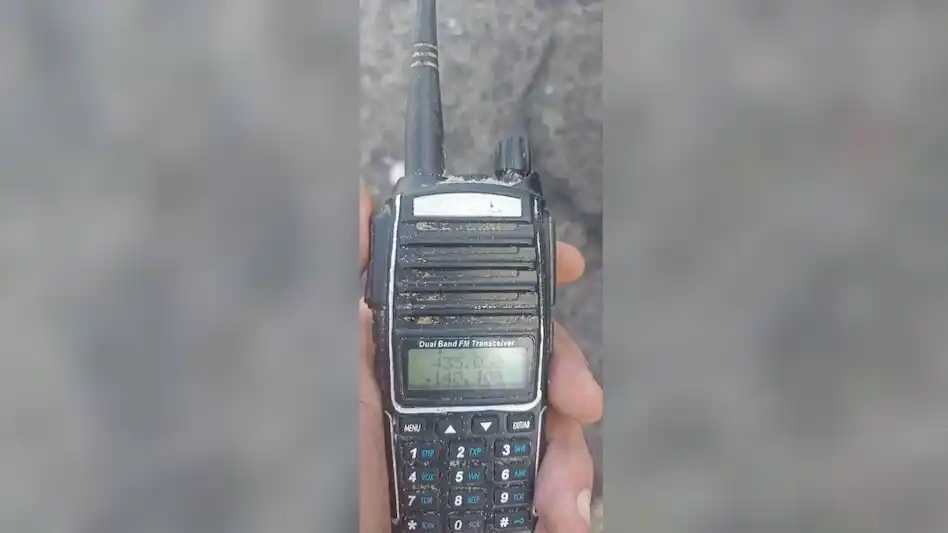Intelligent Signals
For unsecured communications system and sampler
Gahlord Dewald :: 3/2/22 :: Mānoa, Hawai‘i
Intelligent Signals is a game piece for any number of performers divided into two groups of differing size. For ease of reference the larger group will be referred to as Group R and the smaller group will be referred to as Group U. Though the spirit of most game pieces of music tends to be in the line of cooperative games, Intelligent Signals is a competitive game.
Performance
The piece should be performed in a fairly large geographic area such that all performers are out of earshot and/or beyond line of sight of one another. The piece itself takes place over the radio waves of an unsecured communications system.
The objectives of the two groups are different:
- Group R “wins” by advancing a meaningful number of its members to specific locations and achieving some objective assigned to them, such as regime change or the elimination of Group U.
- Group U “wins” by delaying the advance the Group R and/or frustrating their ability to coordinate.
If a member of Group R locates a member of Group U then the Group U member is eliminated. In some ways Intelligent Signals is two different but related games: Group U is playing hide-and-seek while Group R is performing an orienteering race.
Though it’s a competitive game, it’s not entirely certain nor easy to determine which side actually “wins.” It may be useful to have a group of neighbors determine who the winner truly is. Or to use simple criteria such as “Does Group U still exist? If so, then Group U wins” or “Has either group become frustrated to the point of ceasing operations? If so, then the non-frustrated group wins.”
Instrumentation
Group R is to use the unsecured communications system to coordinate their action. Their only required instrument is a device to send and receive voice on that unsecured system. For example, each member of Group R might be supplied with a Baofeng Dual Band FM Transceiver.
Group U will also use the unsecured communications system, but with the objective of confusing Group R’s actions. In addition to a device to send and receive voice (it should be the same device as used by Group R) they may employ a sampler, such as the Bastl MicroGranny.The Bastl MicroGranny may be an ideal sampler for this piece because it contains no wifi radios, no bluetooth radios, no cellular network radios—it contains no radios at all. It incorporates a microphone which can be used to record audio from the communications system transceiver. It incorporates a mono headphone out (for acoustic coupling to the unsecured transceiver). It operates on one 9v battery. It fits in a large pocket. It is manufactured relatively close to a large unsecured communications system. It can hold a large amount of audio on a micro SD card (which can be swapped with other members of Group U). The interface is a little confusing at first, like any interface. But it is not daunting in any way. The quality of the microphone and speaker are fairly low, but likely not so low as to be terribly noticeable over consumer-grade communications systems. Any sampler would likely do, however.

Some Potential Strategies for Group U
In the age of social media it may be tempting for Group U to use the unsecured communications system to taunt Group R. While satisfying, and perhaps useful at frustrating Group R to a degree, it is more likely that it will encourage Group R to change frequencies or channels or simply ignore the taunts. If the stakes of the game are high enough, Group R will learn to identify and ignore the taunts and continue to their objectives.
In order to confuse Group R, Group U might attempt to mimic their signaling or voices and insert additional instructions or commands in the unsecured communications system. This might cause errors in Group R’s coordination efforts.
A third strategy would be to use the sampler to record genuine Group R chatter, segment that chatter into meaningful audio chunks, and replay these audio chunks back into the unsecured communications system. This approach has some advantages:
- Uses the same voices as Group R
- Uses the same communication pattern as Group R
- Generates doubt about the veracity of any coordinating commands on the unsecured network
Some types of communications injected into the unsecured system might prove better at causing delay or confusion or other cognitive dissonances.
- Delay phrases “Let me check on that.” or “Please hold until next instruction.” or “Please repeat that, I didn’t hear clearly.”
- Out of context phrases such as “Please repeat that, I didn’t hear clearly.” when there hadn’t been any information to repeat in the first place
- Out of geographic context, Group U could exchange samplers so that messages common on the network in Location C could be injected into the unsecured communications system at Location K, for example. This might cause confusion as to the relative location of specific members of Group R
- Out of temporal context: if members of Group R become frustrated or are removed from participation for other reasons, continued appearance of their voice via sampled audio may create confusion for Group R.
One final thought for Group U would be to identify the volume of phrase insertion that achieves maximum confusion with minimum exposure of themselves. For this reason, it may be wise to regularly shift the samples used and also to limit the number of phrases inserted in any particular communication stream or geographic location. Repeated phrases or consistent phrase insertion in a specific geographic area may alert Group R to the potential of eliminating a Group U member nearby.